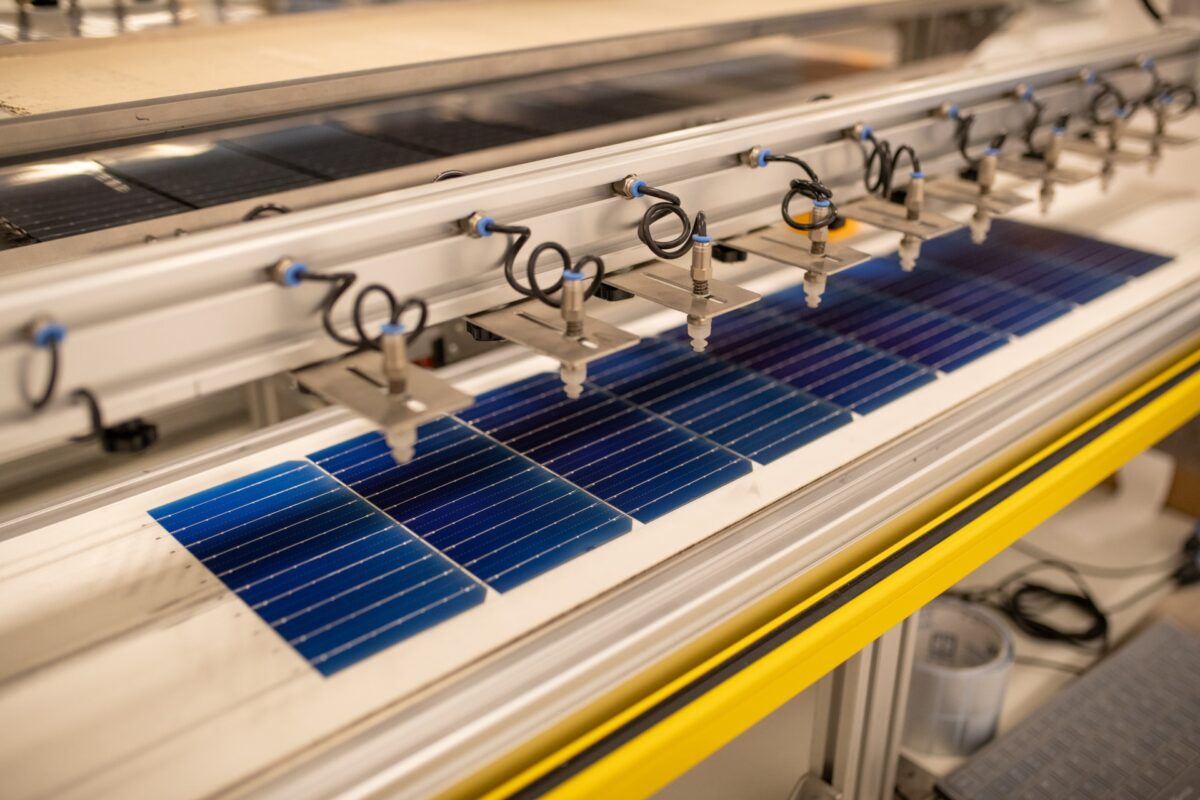Industrial policy is at the centre of global governments’ approach to net-zero strategies, as evidenced by the United States’ Inflation Reduction Act (IRA), India’s Production-Linked-Incentive program and the European Commission’s Green Deal Industrial Plan.
Industrial planning is easy to get wrong and difficult to get right. But Australia has a once-in-a-generation opportunity to observe the strengths of other nations’ approaches, and to foster industrial collaboration between the private and public sectors in supporting the critical industries that will set us up for long-term success in our energy system.
Thankfully, state and federal governments are on the right path, and with some additional policy measures Australia can enjoy a renewables manufacturing renaissance that delivers jobs and growth while also achieving emissions reduction targets and sovereign capability in a renewable energy system.
At Tindo Solar, Australia’s only manufacturer of solar panels, we are at the coal – or panel – face. We’ve managed to set up a successful manufacturing business, with minimal government support, in the face of intense competition from overseas manufacturers which have benefitted from extensive policy and taxpayer backing.
This unique experience has given us hope that manufacturing renewables hardware at scale in this country is not only possible, but is an economic, environmental and ethical imperative.
Economically, the International Energy Agency (IEA) estimates 1,300 manufacturing jobs could be created for each gigawatt of solar PV production capacity. Environmentally, locally made goods incur less freight carbon miles and production can be powered by renewable sources. And from an ethical perspective, locally made goods provide much better visibility of labour and environmental practices in the supply chain, a key risk in the renewables industry.
Geopolitics also plays its part. The nations trying to incentivise renewables manufacturing believe it is critical to have sovereign capability in building wind, solar and battery hardware. Achieving an 82% Australian renewable grid by 2030 is a noble goal, but is there a way to do it where Australia enjoys more benefits? And what can be done to expedite the process at lowest cost to taxpayers?
The first step is getting manufacturing capacity up and running. Doing this requires significant finance. The Commonwealth government’s National Reconstruction Fund (NRF), as well as existing entities such as the Clean Energy Finance Corporation (CEFC), provide an ideal mechanism for securing the upfront capital required to build and kit out factories. With their backing, commercial lenders are also more comfortable providing finance, so initiatives like the NRF are ideal for getting projects off the ground. Other initiatives being championed by governments include New South Wales’ Net Zero Plan Stage 1, and Queensland’s Energy and Jobs Plan. All these government-led initiatives help to reduce the initial development costs and risks, and since many of the interventions offer debt or equity, taxpayers can recoup their investment.
However, kickstarting an industry is one thing; how do we build a sustainable one? A domestic industry where the benefits outweigh the low-cost import model?
At Tindo Solar we believe this question is answered by – in the case of solar panel manufacturing – creating a manufacturing facility of at least 1 GW of output per year. That equals about 7,000 rooftop panels per day, or one-third of the daily target that Australian Energy Minister Chris Bowen has signalled.
A 1 GW facility creates enough buying power and scale-efficiency that we could bring down the import/domestic price delta by around 70%. When the price delta is compressed to this point, domestically-made panels become competitive because of their high-quality, longer life and their lower carbon miles which could also be supported by a Carbon Border Adjustment Mechanism.
Secondly, 1 GW of panel output incentivises other domestic manufacturers – for example, of glass, frames, solar cells and back sheet – to justify building new production based on the improved economic scale delivered by the 1 GW solar panel production.
Low-cost finance gets us some of the way to making a domestic industry viable. However, there is a missing piece; targeted short-term price support as the industry scales.
Government does not have to go into ‘subsidy’ mode to address this. We have the support of developers and other customers who are keen to use our panels, because they more fully satisfy their ESG goals and it helps de-risk their own projects because local supply removes the volatility of freight logistics and currency fluctuation.
However, the reality of low-cost imports has to be acknowledged. We are seeing this in the US, India and Europe, all of whom are prepared to support local renewables manufacturing with a variety of mechanisms.
The American IRA is throwing huge sums at manufacturers via a range of subsidies. Australia could be smarter, doing it in a more targeted and efficient way that achieves similar outcomes. The Commonwealth Government has already implemented a ‘production credit’ as part of its Hydrogen Headstart program in which applicants nominate value “that should represent the difference between the expected sales price to each offtaker and the applicant cost of production.”
A similar mechanism, with an Australia-made stipulation, would work well in the solar panel manufacturing industry and stimulate the whole supply chain. As the IEA has modelled, there are 1,300 Australian jobs in the offing for every 1 GW of solar panels made domestically. We believe it’s time for Australia’s governments to invest in domestic manufacturing so we can turn our most abundant resource – sunlight – into a sovereign energy capability.

Author: Richard Petterson, Chief Executive Officer, Tindo Solar
The views and opinions expressed in this article are the author’s own, and do not necessarily reflect those held by pv magazine.
This content is protected by copyright and may not be reused. If you want to cooperate with us and would like to reuse some of our content, please contact: editors@pv-magazine.com.








1 comment
By submitting this form you agree to pv magazine using your data for the purposes of publishing your comment.
Your personal data will only be disclosed or otherwise transmitted to third parties for the purposes of spam filtering or if this is necessary for technical maintenance of the website. Any other transfer to third parties will not take place unless this is justified on the basis of applicable data protection regulations or if pv magazine is legally obliged to do so.
You may revoke this consent at any time with effect for the future, in which case your personal data will be deleted immediately. Otherwise, your data will be deleted if pv magazine has processed your request or the purpose of data storage is fulfilled.
Further information on data privacy can be found in our Data Protection Policy.